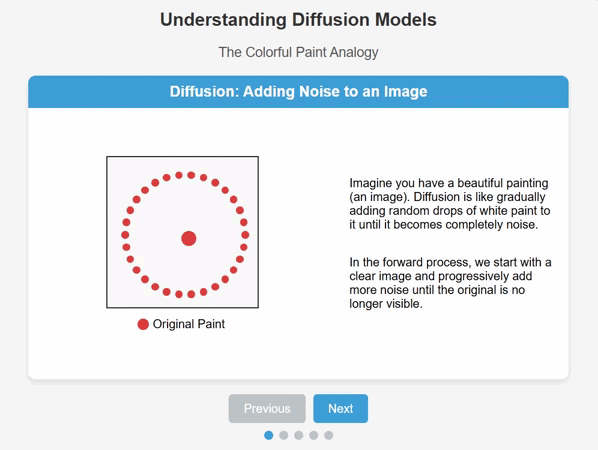What are the diffusion models? | Techradar

Diffusion models just exploded on the world stage two years ago. The technology has been for a while, but only when we all experienced the revolution of AI image production, Stark entered Focus.
Suddenly, everyone and their dogs can create amazing works of art by writing a request in a text box.
However, diffusion models are not only related to art and image creation. The scientific world, music and even Hollywood began to understand the benefits of this powerful AI technology.
How does it work?
Diffusion works by adding noise to educational data until completely unknown, and then reversing the process of creating new data from original education.
Like a sculptor, the stone in front of it is like ‘to reveal’ to ‘reveal’ by slowly breaking down in the wooden or plaster.
The smart bit teaches the AI model to understand how to rebuild a new version of the original data by removing the noise until the desired result becomes ‘focus’.
Diffusion is one of the most difficult AI concepts to explain to the non -profession. When people talk about artificial intelligence playing art or music, what they don’t notice is the diffusion models that provide these miraculous results, they do not move directly according to their original education data, but they use these data as a starting point to create something completely new and unique.
Give the model a picture of a black cat, and after this point, the model will only learn how to recreate a similar image using this noise diffusion and reduction process.
One of the main powerful aspects of diffusion models is their working capabilities without the need for structured training data.
This makes them extremely versatile, rather than relying on examples of clearly tagged examples, a diffusion model learns how to reconstruct the content by realizing how to deny and reconstruct the original education data given.
The result can be incredibly complex, as the noise can be infinite complex. Therefore, not only in art, but also other areas that require music, science and complex AI processing.
Today, architects are increasingly using diffusion models to visualize new building styles, and fashion designers can play with new clothing concepts instantly.
One of the most valuable fields for these models is in the medical research area where diffusion techniques are increasingly used to accelerate and improve diagnostic imaging.
The ability to instantly recognize and define the patterns in complex images perfect these models to identify hidden or uncertain medical conditions.

The disadvantage of such power is increasingly more and more sophisticated and strong computers to influence the denoising process.
Low -powerful computers cause production times too slow to be considered inevitable.
Diffusion models are also very dependent on high -quality training data entry, garbage, garbage. In addition, there is also the problem of input data bias that can lead to abnormal results unless the model is properly trained over time.
Such productive AI is at the top of presenting AI video, which is almost the same as the content produced by human.
However, Deepfake videos and other malicious content, copyright abuse and synthetic content designed to help criminal activities in a wide range of fields are a problem that grows on the Internet.
Despite these difficulties, diffusion models will play an increasingly more important role in our modern lives. The creative and functional advantages of having such AI aid prove that there is a real revolution in almost every field that is in mind.




